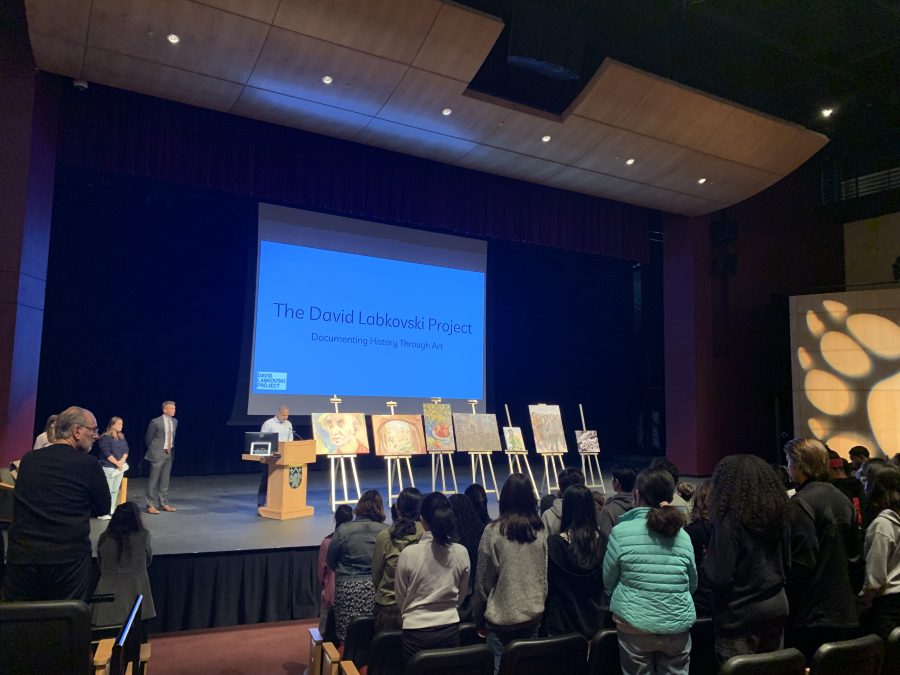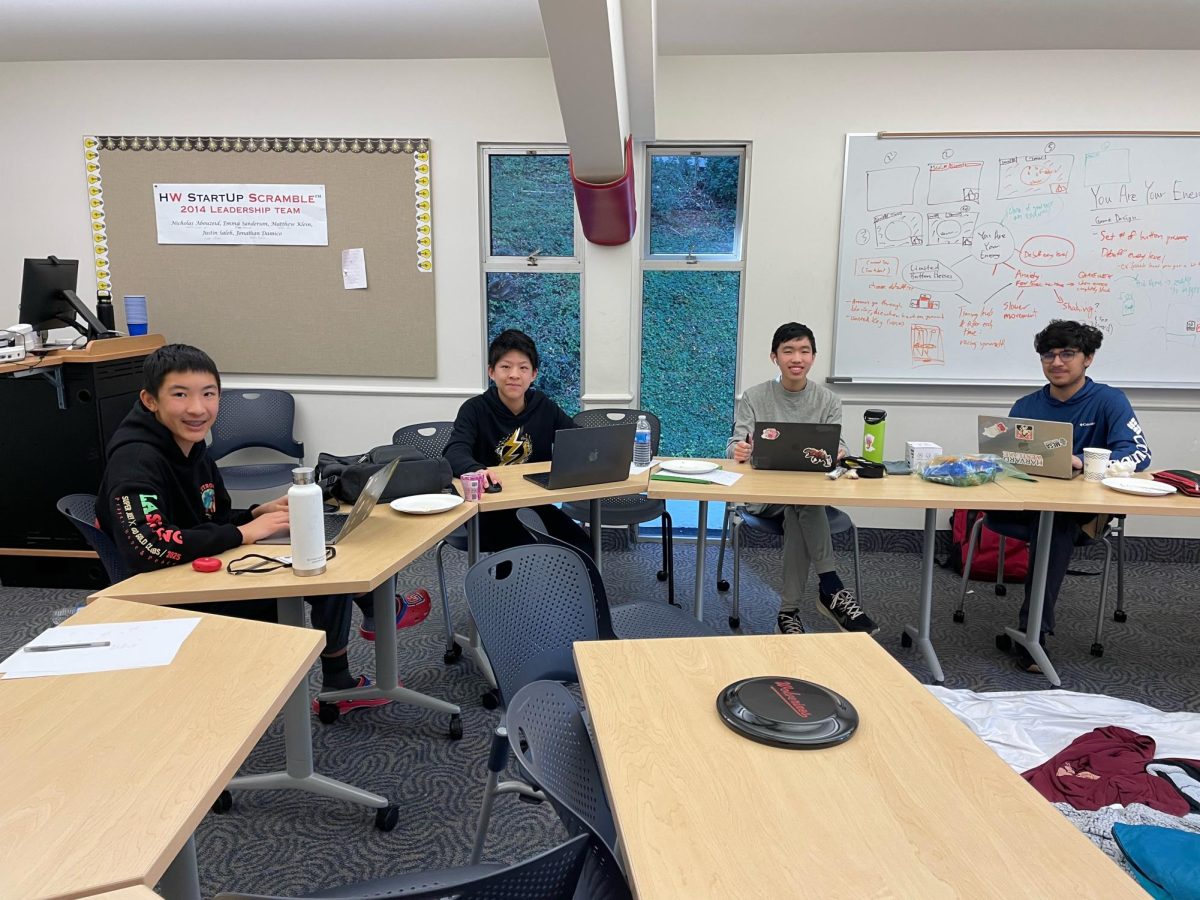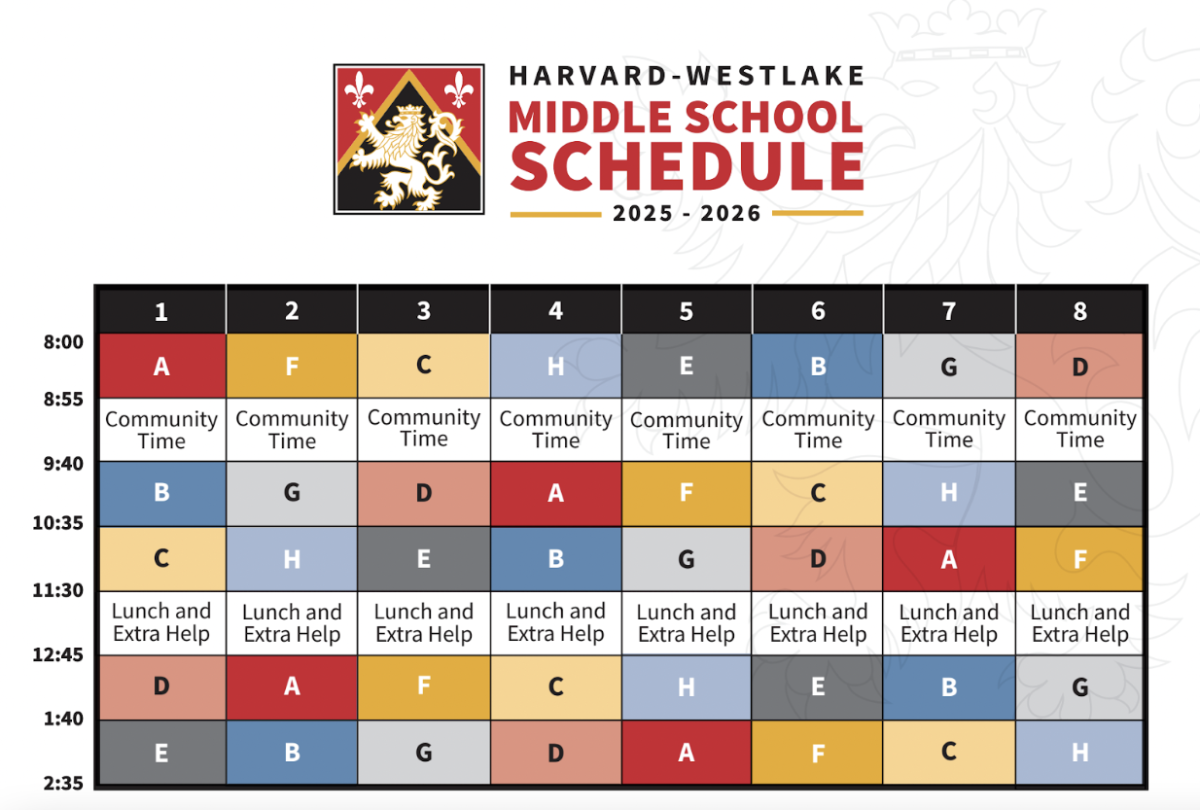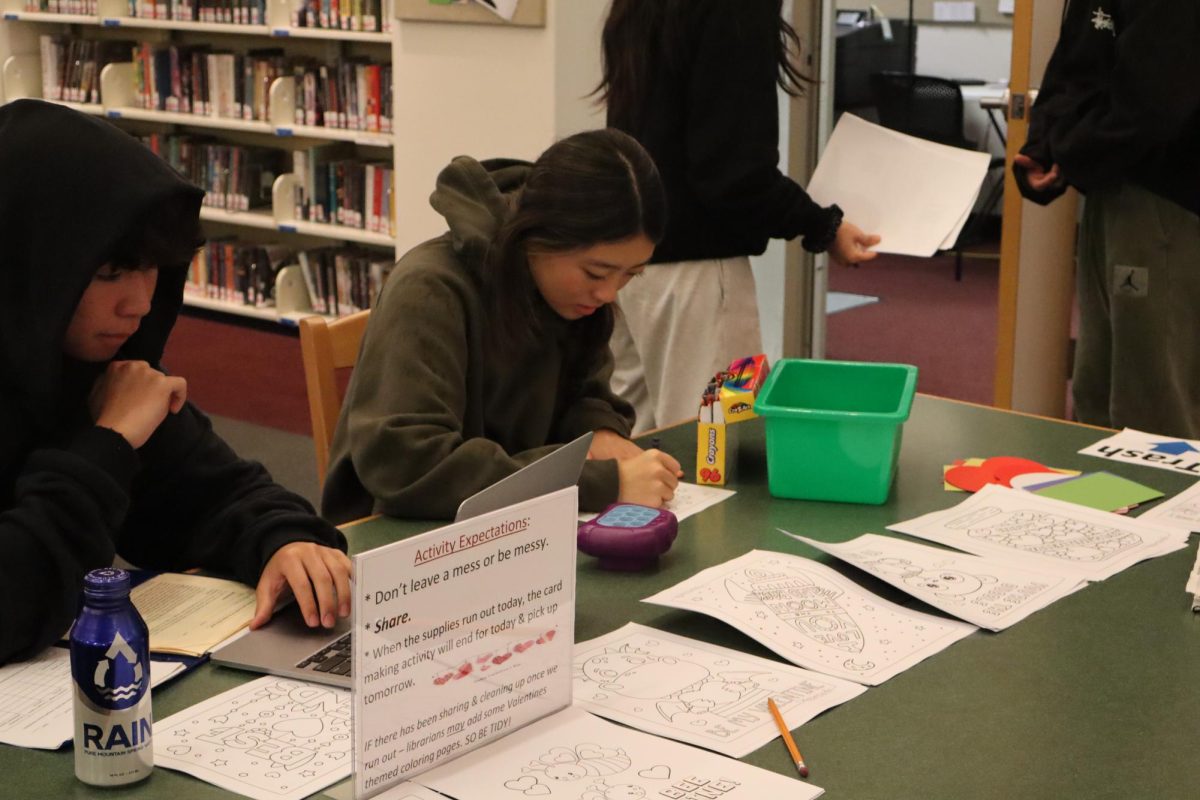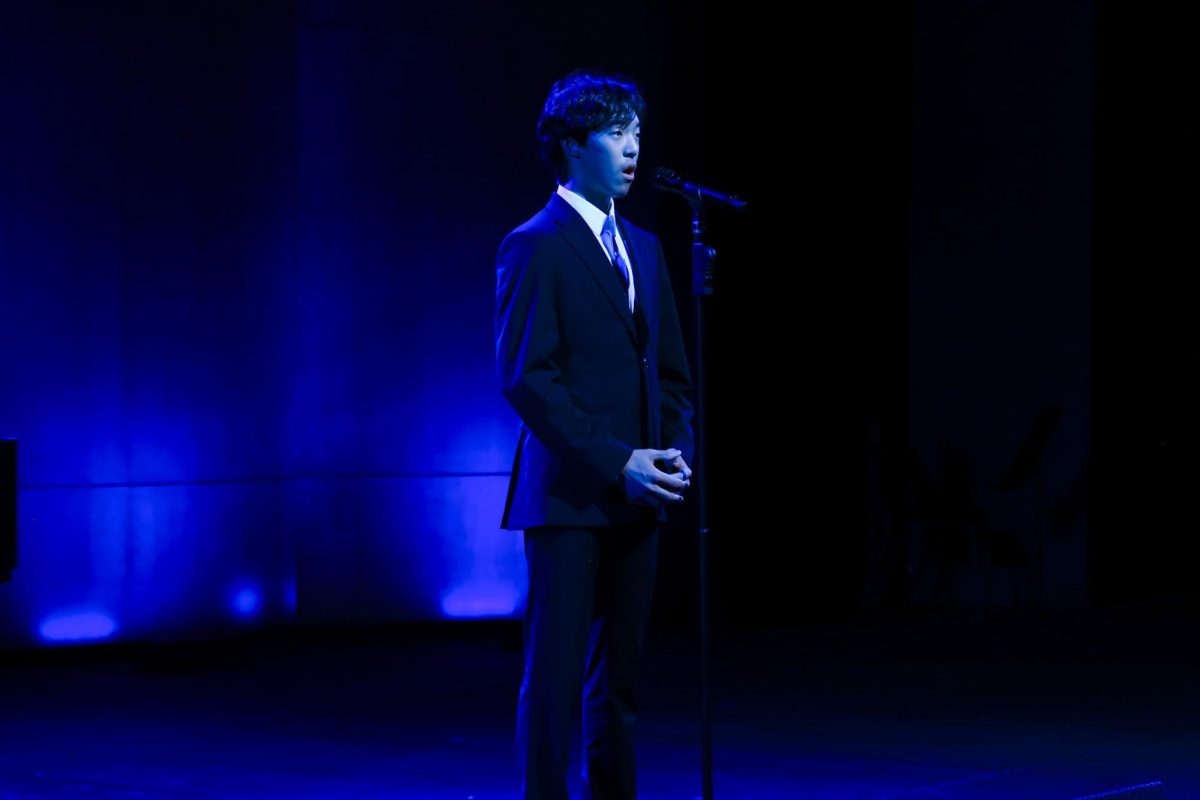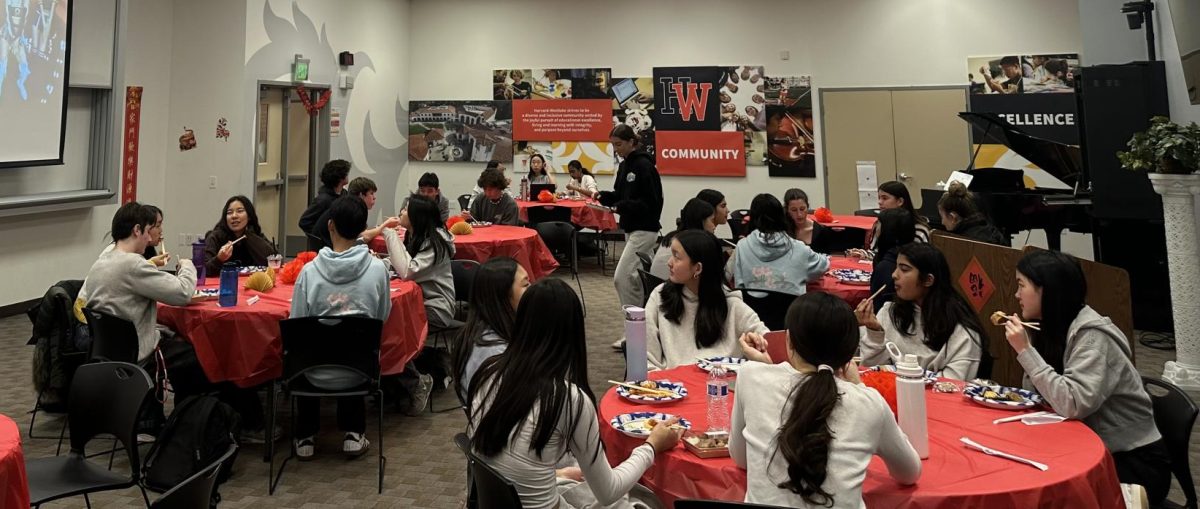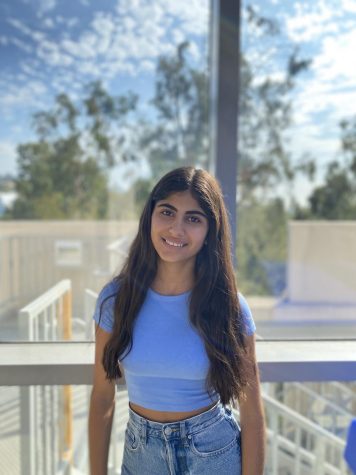In honor of Yom HaShoah Holocaust Remembrance Day, Jewish Culture and Anti-Semitism Awareness Club hosted an all school assembly. JCAAC student co-leader Romy Harari ’26 and faculty leader Mayan Benami led the process of putting the assembly together, organizing a presentation in collaboration with the David Labkovski Project.
The DLP is a nonprofit organization that strives to educate the younger generation about the Holocaust through the art of survivor David Labkovski. Labkovski captured the emotions of living through the Holocaust within his original paintings. The assembly highlighted the variety of messages presented in his pieces, portraying the atrocities of the Holocaust through a new medium.
Benami found that using art to educate is beneficial, especially when talking about difficult subjects.
“I think art is always a nice way to present ideas – especially difficult ideas,” Benami said. “In addition to that, I did want people to have a little taste – if they haven’t been educated [about the Holocaust] before – about exactly what happened.”
After becoming a student docent in the DLP, Harari’s appreciation for finding meaning within artwork grew.
“I thought it was so cool how you could see and learn about the Holocaust through a different view through art, and the paintings are beautiful. What I learned through the process that I think is so meaningful – and that everyone got to see at the assembly – is that each painting shared a different message of David’s story and his life through the Holocaust,” Harari said. “We can all learn about the Holocaust through each painting like a puzzle piece, and put them all together to make a story.”
Harari was honored with an award for her commitment to the DLP, as well. She shared that her contributions to the DLP were meant to bring a new perspective to the school body, and the unexpected reward confirmed that this goal had been reached.
“It was really unexpected. I was really surprised. I put in the work after I did the student docent program to bring it to HW just so we could have something different,” Harari said. “I just wanted to do something the school has never done before and so I never would have hoped or expected something like this and I was so honored to be the recipient of this amazing award in Holocaust education.”
To conclude the assembly, Benami recited the Mourner’s Kaddish – a Jewish prayer that is recited after the passing of a loved one – for those who passed in the Holocaust.
“There at Auschwitz, people began saying it for each other, and for themselves, because they knew that nobody would be there to say it for them,” Benami said. “We do this to say kaddish for the millions of men, women, children, and babies who were murdered and who had no one to say it for them.”
Benami shared the intentions behind saying this prayer.
“I thought it would be really meaningful to say [the mourner’s kaddish] because I think it’s important that people feel like they have some kind of action that they can take when they are dealt such a difficult thing to hear,” Benami said. “I feel like giving people the opportunity to just be present for that prayer and also to stand if they felt like it, allowed them to do something about what they are hearing.”
Harari shared that looking out to find the school community immersed in Jewish culture was very moving.
“I think that was probably my favorite moment of the whole assembly. I think it was so powerful and meaningful,” Harari said. “I think that was amazing – just the amount of respect that we received from the student body and faculty members was astonishing and I was really taken aback by it.”
Looking back, Harari feels extremely proud to have shared the Jewish culture with the school in a unique way.
“It meant so much. I think it was amazing how HW and the administration – including Mr. Wimbish – were so open to this idea of bringing something new to the school that hasn’t been done before, so I think it set a precedent for Yom Hashoah assemblies and more Jewish holidays to come and things to bring to the school.”
